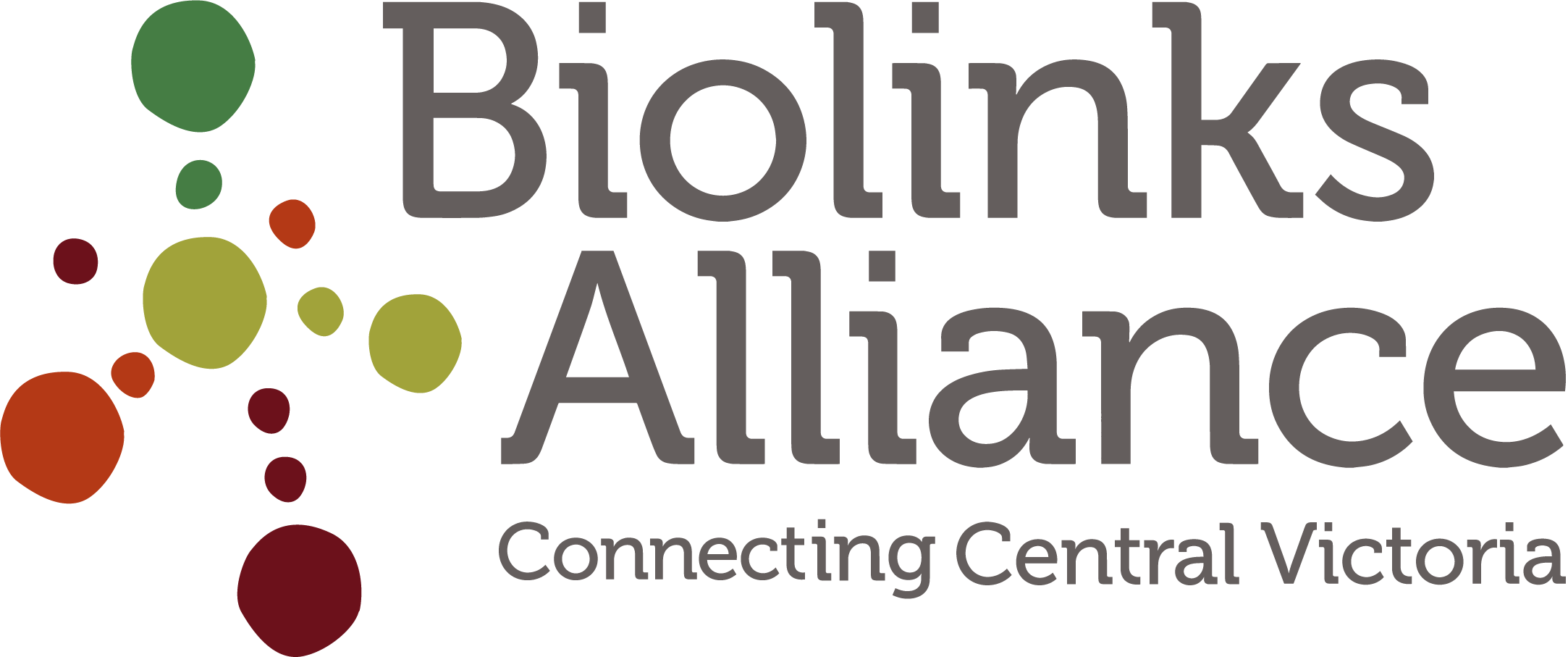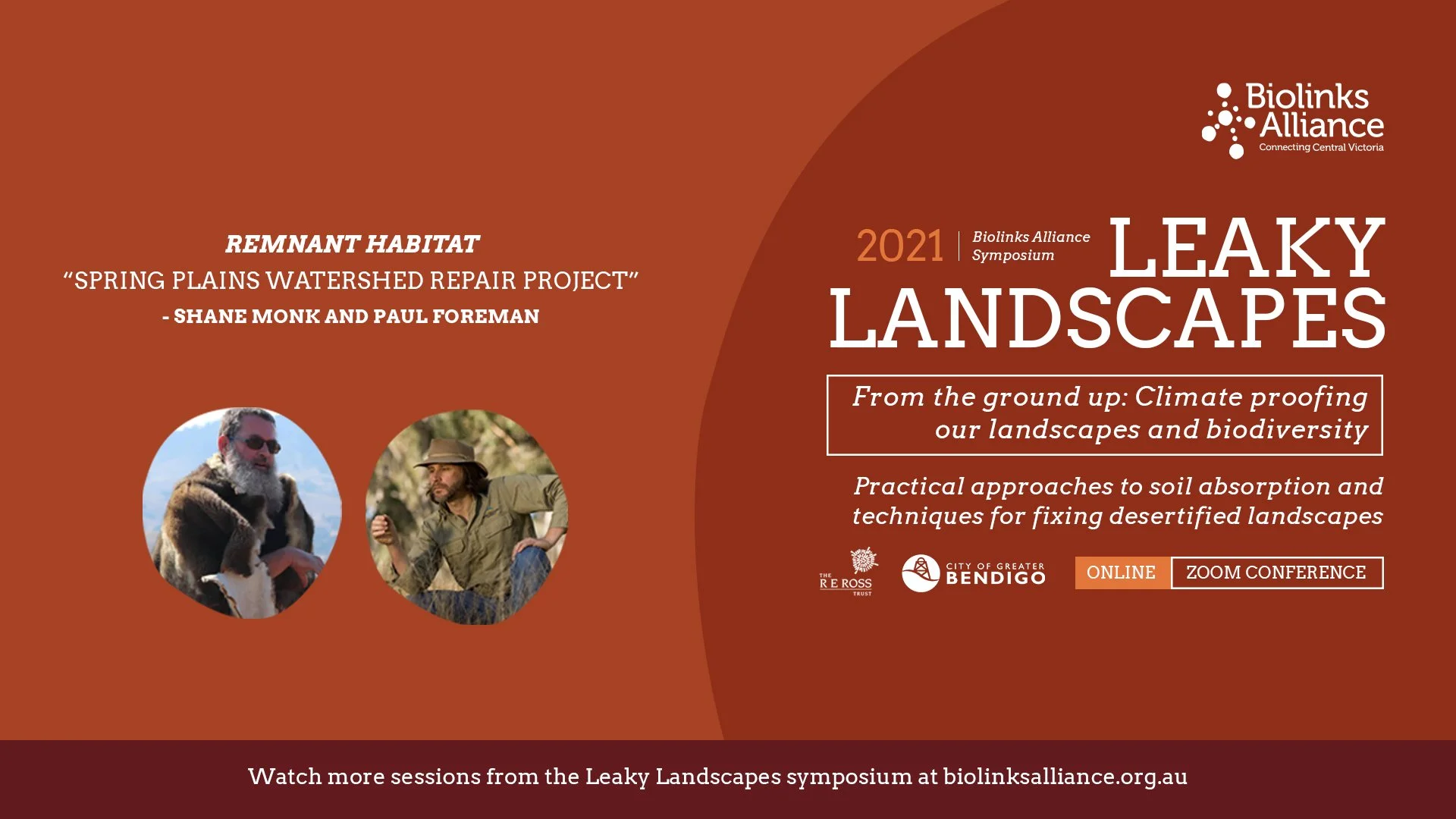Learn about the work that goes into the planning of an ambitious landscape-scale restoration project. You’ll be introduced to the Deep Creek Biolink project, a collaborative effort between Biolinks Alliance, Upper Deep Creek Landcare Network, Melbourne Water, Macedon Ranges Shire Council and Upper Maribyrnong Catchment Group.
Read MoreThis webinar explores the link between on-farm natural capital and woodland birds, and how we can exploit that for a better future for woodland birds and people.
Read MoreWe're lucky to have Tanya Loos, author of the fascinating book 'Living with Wildlife', join us as our guest presenter. Learn about the amazing local species that your garden or property can provide a refuge for - and, importantly, what you can do to minimise conflicts that sometimes arise from sharing our space with native critters.
Read MoreLearn what we’ve been up to in the past year and how you can play a role in our ground-breaking initiative - Glideways in Central Victoria. You’ll be introduced to the glider species found across our region, why conserving them and their habitat is so vital, and learn about local projects that demonstrate simple, strategic and effective approaches to helping protect them.
Read MoreHear from our guest speaker Ross Goldingay from Southern Cross University about his research with Karen Thomas and Darren Quin over a 6-year period near Bendigo in this intriguing webinar. Together, they monitored nest boxes installed through a 600-ha block of forest with natural tree hollows in short supply.
Read MoreLearn about the diversity and ecology of one of our most misunderstood and important groups of species, and the critical roles they play throughout Central Victoria. You'll be introduced to the amazing world of bats, including their evolutionary history, biology and ecology.
Read MoreIn our second webinar about ‘rewilding’, as part of our 2024 Monthly Webinar Series, hear from Derek Sandow who is the Marna Banggara Project Manager at the Northern and Yorke Landscape Board.
Read MoreThe Critical Role of Pollinators In Protecting Biodiversity Webinar is an intriguing look at how pollinators and other invertebrates are the backbone to our ecosystems.
Read MoreHear about ways to protect and restore these elders of our lands. At this webinar, we'll together look at: Why are Large Old Trees so important? What are the dire threats they face? How can we together urgently help them?
Read MoreThis webinar offers a chance to discover insights from special guest presenter, Annette Rypalski, Biodiversity Director at Odonata Foundation into what it takes to ‘rewild’ Central Victoria and move towards a nature-positive future for our region.
Read MoreDiscover at this webinar how the Spring Plains Watershed Repair Pilot Project paves the way for a new approach to building climate resilience and restoring biodiversity in Goldfields landscapes at scale and speed, and how Biolinks Alliance is looking to share and help adapt it for use in other landscapes across the region.
Read MoreDr Chris Pocknee talks about the specialised approach of ecological thinning, one of the innovative interventions used at our Watershed Repair Pilot Project at Spring Plains Nature Conservation Reserve (NCR) on Taungurung country. This technique is used in dense regrowth Box Ironbark forest to accelerate forest maturation and restore biodiversity.
Read MoreThe plight of gliders, from the cat-sized Greater Glider to the miniscule Feathertail Glider, capture the hearts and minds of many people across our region. Don't miss the chance to learn more about these adorable creatures (many of which are threatened) and the initiatives to protect them in this webinar.
Read MoreListen to this fascinating conversation with Biolinks Alliance Ecologist, Chris Pocknee, and Local to Landscape Facilitator, Cameron O’Mara about our urgent work to save Large Old ‘Hero’ Trees and their life-sustaining hollows.
Read MoreRestoration of Australian Light Horse Memorial Park
Read MoreSpring Plains Watershed Repair project
Read MoreThis workshop showcases ecological restoration projects designed to repair the hydrological function, soil health and associated biodiversity of damaged ‘natural’ bushland that has been highly altered by past land uses. Under discussion will be practical approaches for restoration, learnings from trials and how trials can be scaled-up for greater impact at landscape scales.
Read MoreEucalyptus tree identification booklet
Read MoreNewham Landcare has produced this 5 minute video which promotes the important role of the Cobaw Biolink in enhancing the connections between Mount Macedon and the Cobaw Range on both private and public land. This video aims to engage landholders and residents and make them aware that their contribution, no matter how big or small, is environmentally vital. Protecting existing high quality native vegetation and creating connectivity in the biolink will help native plants and animals adapt to climate change. Spotlight surveys on habitat-rich roadsides round Newham found more animals present in the Cobaw Biolink than during similar surveys on Mount Macedon.
Read MoreThe afternoon of the symposium was spent looking at various methods being tried to bolster the quality of grasslands in degraded sites at the Euroa Arboretum and farmland at Miepoll.
Read More


















